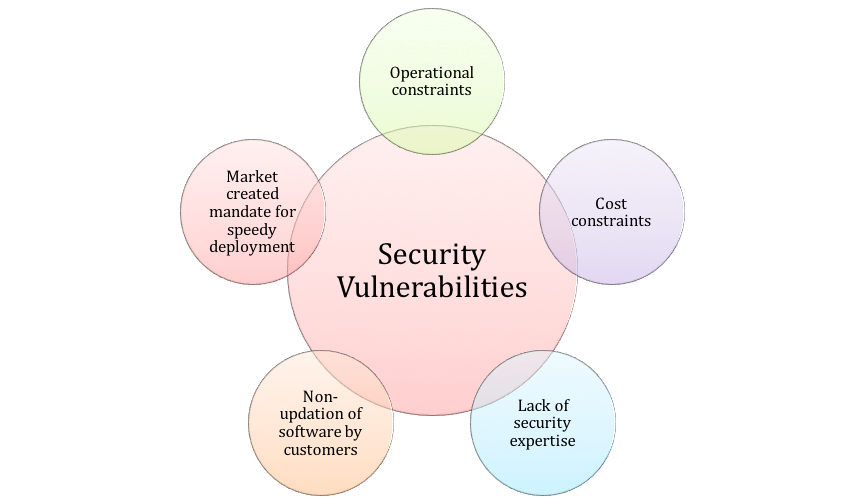The rapid proliferation of Internet of Things (IoT) devices has transformed the way we interact with technology, but it has also introduced significant cybersecurity risks. As more devices become interconnected, the potential for vulnerabilities increases, making it crucial to understand the implications of these risks. In this article, we will delve into the various cybersecurity threats that IoT devices face, including data breaches, unauthorized access, and the potential for large-scale cyberattacks.
Throughout this exploration, we will highlight the most common vulnerabilities found in IoT devices and discuss real-world examples of security breaches that have occurred due to these weaknesses. You will learn about the importance of implementing robust security measures, such as encryption and regular software updates, to safeguard your devices and personal information. Additionally, we will provide practical tips on how to enhance your IoT security posture, ensuring that your smart home or office remains a safe environment.
As we navigate through the complexities of cybersecurity in the IoT landscape, we encourage you to stay informed and proactive. Understanding the risks associated with IoT devices is the first step in protecting yourself and your data. Join us as we uncover the critical aspects of cybersecurity risks in IoT devices and empower yourself with the knowledge needed to mitigate these threats effectively.
As the Internet of Things (IoT) continues to expand, the number of connected devices increases, leading to a rise in cybersecurity risks. Understanding these risks is crucial for both consumers and businesses to protect sensitive data and maintain privacy.
Inadequate Security Protocols
Many IoT devices are designed with minimal security features, making them vulnerable to attacks. Manufacturers often prioritize functionality over security, leading to devices that lack basic protections such as encryption and secure authentication methods. This inadequacy can result in unauthorized access to personal data and control over the devices themselves.
Moreover, the lack of regular software updates and patches further exacerbates these vulnerabilities. Users may not be aware of the importance of keeping their devices updated, leaving them exposed to known exploits. As a result, it is essential for both manufacturers and consumers to prioritize security in the design and usage of IoT devices.
Data Privacy Concerns
IoT devices often collect vast amounts of personal data, raising significant privacy concerns. From smart home devices to wearable technology, the information gathered can include sensitive details about users’ habits, preferences, and locations. If this data is not adequately protected, it can be intercepted by malicious actors, leading to identity theft and other privacy violations.
Furthermore, many users are unaware of how their data is being used and shared. Companies may sell this information to third parties without explicit consent, further complicating the issue of data privacy. It is crucial for consumers to understand the privacy policies of their devices and take proactive measures to safeguard their information.
Botnets and Distributed Denial of Service (DDoS) Attacks
IoT devices can be easily compromised and turned into part of a botnet, which is a network of infected devices controlled by a hacker. These botnets can be used to launch Distributed Denial of Service (DDoS) attacks, overwhelming targeted servers and causing significant disruptions. The infamous Mirai botnet attack demonstrated how vulnerable IoT devices can be exploited for large-scale attacks.
As more devices connect to the internet, the potential for such attacks increases. Organizations must implement robust security measures to prevent their devices from being hijacked and used in malicious activities. This includes monitoring network traffic and employing intrusion detection systems to identify unusual behavior.
Lack of Standardization
The IoT landscape is fragmented, with various manufacturers using different protocols and standards. This lack of standardization can lead to compatibility issues and security gaps. Devices from different manufacturers may not communicate securely, creating vulnerabilities that can be exploited by attackers.
To address this issue, industry stakeholders must work towards establishing common security standards for IoT devices. This would not only enhance security but also improve interoperability among devices, making it easier for consumers to manage their smart ecosystems.
Physical Security Risks
IoT devices are often deployed in public or unsecured locations, making them susceptible to physical tampering. Attackers can gain direct access to devices, manipulate them, or extract sensitive information stored locally. For instance, smart cameras and sensors placed in public areas can be easily accessed if not properly secured.
To mitigate these risks, organizations should implement physical security measures, such as surveillance and access controls, to protect their IoT devices. Additionally, educating users about the importance of securing devices in their homes and workplaces can help reduce the likelihood of physical attacks.
User Awareness and Education
One of the most significant challenges in IoT security is the lack of user awareness. Many consumers do not understand the potential risks associated with their devices or how to secure them effectively. This knowledge gap can lead to poor security practices, such as using weak passwords or neglecting software updates.
To combat this issue, manufacturers and cybersecurity experts must prioritize user education. Providing clear guidelines on securing IoT devices, along with regular updates on emerging threats, can empower users to take control of their device security. Workshops, online resources, and community outreach programs can play a vital role in raising awareness and promoting best practices.
The Internet of Things (IoT) has revolutionized the way we interact with technology, but it also introduces significant cybersecurity risks. Below is a summary of the key risks associated with IoT devices.
| Risk | Description | Potential Impact |
|---|---|---|
| Insecure Devices | Many IoT devices are built with minimal security features, making them easy targets for attackers. | Unauthorized access, data breaches, and control over the device. |
| Weak Authentication | Default passwords and lack of strong authentication mechanisms can lead to unauthorized access. | Compromise of personal data and device functionality. |
| Data Privacy Issues | IoT devices often collect sensitive personal data, which can be exposed if not properly secured. | Identity theft, financial loss, and privacy violations. |
| Network Vulnerabilities | IoT devices can serve as entry points for attackers to access larger networks. | Widespread network breaches and potential disruption of services. |
| Lack of Updates | Many IoT devices do not receive regular software updates, leaving them vulnerable to known exploits. | Increased risk of malware infections and exploitation of vulnerabilities. |
| Physical Security Risks | IoT devices can be physically tampered with, leading to unauthorized access or data manipulation. | Loss of control over the device and potential data loss. |



